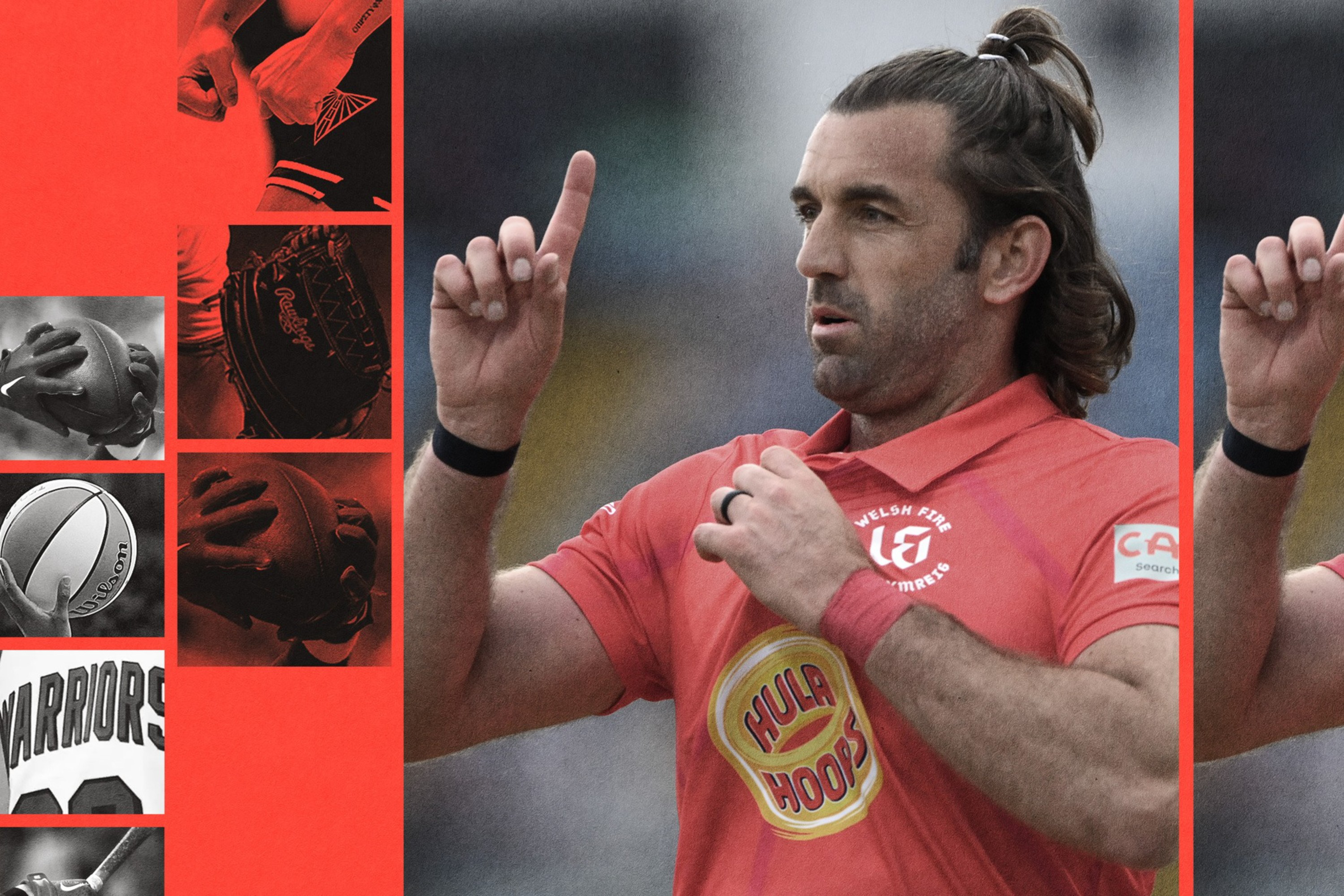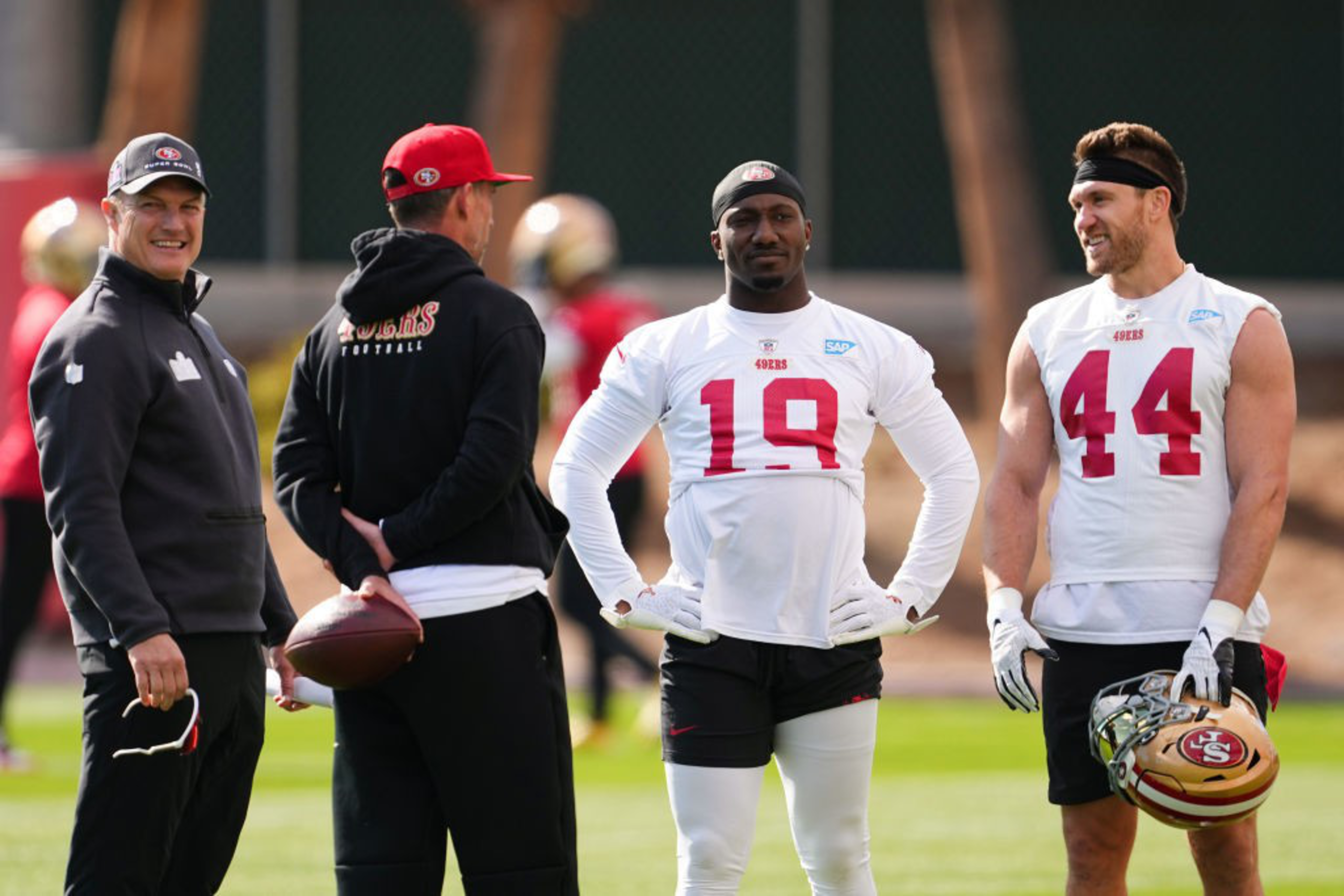Nearly a month ago, general manager John Lynch outlined the 49ers’ offseason strategy at the NFL Scouting Combine. Since then, the 49ers have proceeded in the manner Lynch hinted they would: Spending is down from No. 1 to No. 15, near-term dead money totals are up, and the roster — with 19 spots still open following the primary waves of free agency — is ready for the youth infusion that’ll come via April’s NFL Draft.
At some point this offseason, lucrative extensions for quarterback Brock Purdy, tight end George Kittle, and maybe even linebacker Fred Warner should vault the 49ers back into the top five of annual cash spent on salary.
We’re about halfway through this whole dance, which has taken on all the characteristics of a typical NFL financial reset. It’s one the 49ers very clearly needed following 2024’s 6-11 disaster. But predictably, the process has generated plentiful misunderstandings about the 49ers’ tactics. We’re at a good juncture — the pivot from free agency to the draft — to answer persistent questions.
Is the 49ers’ 2025 accumulation of dead money a big deal?
No.
There’s been unreasonable hysteria surrounding the pileup of dead money — $77.8 million — on the 2025 books. But the panic seems to be rooted in a misunderstanding of what dead money actually is.
Section 415: Cricket is on the rise in the U.S., and the Bay Area is a hotbed

Section 415: Steph Curry, Jonathan Kuminga, and a Warriors season preview

Section 415: After the 49ers’ 4-1 start, what’s a realistic outcome for this season?

Sure, the name carries a negative connotation. But this is not that dramatic. Simple summary: All money paid to a player must hit the salary cap at some point — and dead money is just cash that the 49ers have paid and intentionally pushed back and that is finally hitting the cap as contracts expire.
Dead money isn’t a high-interest loan, nor is it necessarily punitive. It’s more like a bar tab. The 49ers — because they believe cap space now is more valuable than cap space later (the cap is growing, so this is logical) — have chosen to defer most cap payments over the years. This month’s exodus of players, many of whom carried deferred cap hits, has forced the team to close out several tabs.
This would only be a problem for the 49ers if they couldn’t afford to absorb all the dead money on their 2025 books. But even with $77.8 million of it hitting now, the 49ers still have about $45 million of 2025 cap space — the seventh-most in the NFL. Paying the tab simply isn’t an issue for them.
In fact, the 49ers have intentionally run up the dead-money tab that they’re paying now. In recent years, they’ve ranked second to only the defending champion Philadelphia Eagles when it comes to parking cap hits into future seasons by stretching contracts out into void years. The salary cap, which is tied to NFL revenue, has risen 24.1% over just the past two years, creating good reason to push payments backward — especially since the league doesn’t charge interest for doing so.
Let’s use tight end Luke Farrell’s new contract with the 49ers to illustrate how this all works. The deal is worth three years and $16.2 million, but the 49ers have deferred cap impact through a $4.3 million prorated signing bonus (shaded in blue below) and a pair of option bonuses (shaded in green and teal) that kick in over Years 2 and 3. Both also amortize for up to five years against the cap, and the 49ers have opted to maximize the prorated portion by creating void years in Farrell’s contract that stretch through 2032.
Whenever Farrell’s tenure with the 49ers ends, all the prorated bonus money in the shaded middle three columns that hasn’t yet been reached will accelerate to hit the cap as dead money. So given the addition of five void years, we can assume that the 49ers crafted this deal knowing it’d produce dead money in the future — and they’ll pay that tab without having lost anything in the long run because the prorations have freed up the same amount of space in the short run.
Many commentators seem too fixated on just the 2025 salary-cap situation. That’s because they likely misunderstand dead money. Since cap space is one large reservoir that’s connected from season to season, no franchise actually operates with this short-term mentality. The 49ers are looking at multi-year numbers, where there’s — at worst — a net-zero dynamic at play.
So, even the Kyle Juszczyk release-and-re-sign didn’t hurt the 49ers?
Nope.
Continuing with the bar tab analogy, the 49ers closed out Juszczyk’s tab when releasing him at the beginning of free agency. That meant Juszczyk’s $3.6 million of deferred cap hits accelerated, and that batch of dead money is now on the 2025 books.
Five days later, when the 49ers reached an agreement on a new contract with Juszczyk, they simply opened a new tab. (At the risk of sounding corny: The 49ers wanted more Juice before they left the bar.) There’s no financial penalty associated with paying the old tab. The 49ers are just shouldering it earlier than normal, with Juszczyk carrying both a regular cap hit and a dead cap hit this season.
That’s unusual, but it isn’t damaging.
But trading Deebo Samuel was financially inefficient, right?
Again, no.
There was consternation when the 49ers traded Samuel to the Washington Commanders, thereby closing out the receiver’s hefty tab by taking a $31.6 million dead-money hit here in 2025.
But again, this wasn’t a new charge or penalty. This was simply a mandatory cap payment that hit the books earlier — and since the 49ers have so much room now, it didn’t affect their spending power.
Through multiple contract restructures over past years, the team had intentionally deferred many of Samuel’s cap hits. Think of the shaded columns above; the team simply stretched them further down. When the 49ers made the trade, they re-absorbed the exact amount of money that they’d pushed back.
Long-term perspective again proves much more useful than a short-term fixation on dead money here. Consider Samuel’s three seasons under the big extension, which he signed in 2022. Over that time, the 49ers paid him:
- $58.3 million total
- $19.4 million per year
That average per year (APY) now ranks No. 22 of all NFL receivers. It’s far from a premium price tag. And although Samuel never redelivered the monster 2021 numbers that preceded the deal, he did average 1,158 total yards, seven touchdowns, and numerous game-changing plays per season over the contract’s lifespan.
That’s not bad business for the 49ers, especially since they recouped a high fifth-round pick from Washington when they offloaded the contract’s final year. The Commanders, by the way, have since sweetened Samuel’s deal: They guaranteed his remaining $17.5 million in salary and added on $3 million worth of incentives.
Here’s an actual example of cost inefficiency among the recent 49ers’ departures: Defensive tackle Javon Hargrave. The team paid him $40 million over two years, but he delivered only eight sacks over just 19 regular-season games.
Financial inefficiency can be accurately measured by comparing production to total pay — not through obsession with team-manipulated dead-money tallies.
Why, then, have the 49ers found the need to rein back their spending?
This is the money question, pun very much intended.
To outsiders, this might be the most confusing aspect of the 49ers’ offseason. They’ve significantly streamlined their operation, shedding a ton of money while adding a comparatively small amount (their free agency spending deficit is actually the largest in NFL history).
So why would the 49ers operate this way if their salary-cap situation isn’t problematic?
Because there’s another lever here that’s correlated (but not firmly tied) to the cap situation: Cash spending.
Because cap hits can be deferred, cash spent can actually exceed the salary cap. The 49ers have capitalized on that, ranking No. 2 among all NFL teams in spending since Lynch took over as GM in 2017.
But there comes a point of diminishing returns for cash spent, and the 49ers clearly hit it after a whopping $334 million — No. 1 in the NFL — yielded an atrocious return on investment in 2024.
As teams mature and improve, rookie contracts expire, and the price of keeping rosters together increases. And as that happens, teams also age. In a young man’s sport — the average NFL player is 26 1/2 years old — the only long-term answer to the quandary of inevitable decline is a constant infusion of youth.
The cost-controlled draft is the only sustainable avenue through which to acquire that youth. So the 49ers, after some disappointing draft hauls and subsequent willingness to overpay for talent in their desperation to win a Super Bowl, are now exercising the self-discipline necessary to turn back the clock.
There’s extra urgency to do so since Purdy is set to graduate from a deal that paid him only about $1 million annually to one that’ll likely be over 50 times as lucrative. Sound roster construction and financial order, two very correlated principles, are more necessary now than ever.
The 49ers were the oldest team in the league last season, and their plan is to rely on the draft — where they’ve amassed a league-high 11 picks — to rectify that. They’ve even used free agency to effectively manufacture an extension of the draft, signing 12 players — the fourth-most in the NFL — at an average APY of just $2.3 million, the lowest number in the league.
The 49ers’ goal: Cost-efficient deals, primarily for younger players with remaining upside, that’ll foster hungry competition surrounding the team’s foundational pillars (the 49ers still have seven All-Pros). That’s the dynamic on which every perennial NFL power has been built — especially in the salary-cap era. Money can buy individual stars but not cumulative team prowess, not in a physical sport featuring so many indispensable jobs across such big rosters.
A truly robust pipeline is needed to water the fields, and that’s the draft. Like one of their NFC West rivals, the 49ers are shifting to an ultra-aggressive focus on it.
Big spending will still come for the A-listers. But the 49ers are dead-set on cost efficiency for the supporting cast, as they’ve reached the point where splurging for the B-list parts of the team was no longer bringing them closer to the ultimate goal. In fact, 2024 showed that this strategy was moving them away from it.
Realities age fast in the NFL.
